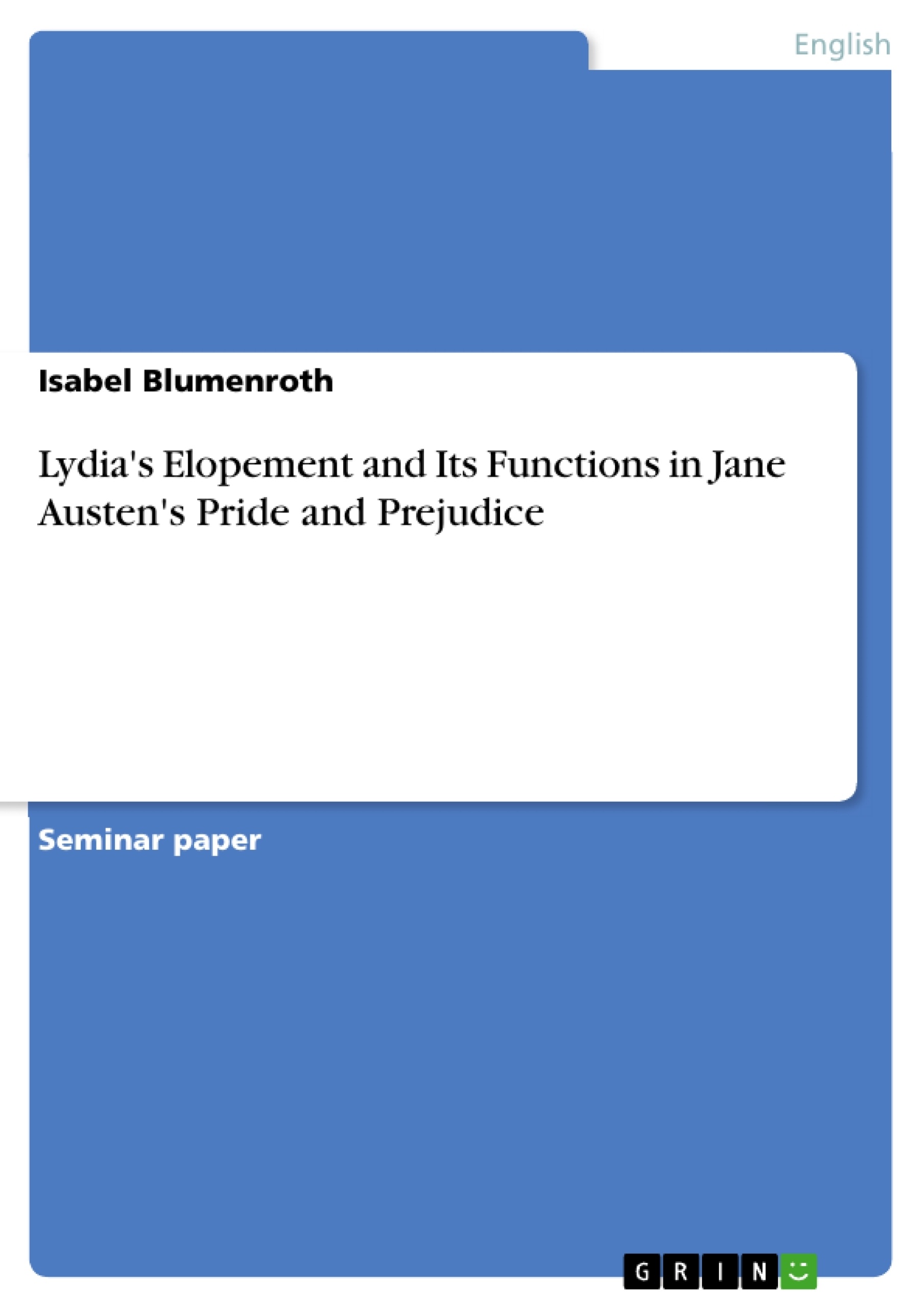Introduction
Even today, nearly 200 years after her death, Jane Austen is still one of the best-known writers of English Literature. Her novel of manners bridged the neo-classical period in which she grew up with the gradual oncoming of the Romantic period 1 with its interest in the individual's growth within the boundaries of its environment. Still conservative in her values and morals, she was nevertheless an advanced writer as far as her way of writing is concerned. Disliking the sentimental novel of her time, she managed to provide an accurate and truthful social portrait. On the other hand she reconciled this ironic view with the credible presentation of a man and woman undergoing a serious "change of sentiments" 2 . In this new entertaining genre Austen thus developed a power of character-drawing 3 especially prominent in her dynamic main figures.
Pride and Prejudice (published in 1813) 4 , one of her best-known novels, is not exceptional in this respect. Its main figures Elizabeth Bennet and Fitzwilliam Darcy prove to be a dynamic pair of figures undergoing a profound change of attitudes and opinions. A lot of analytic secondary literature has been written about those two characters and the development of their relationship. Unfortunately, the bulk of subsidiary characters of the book has not enjoyed that much popularity with the critics.
Some of those subsidiary characters belong to the class of comic characters and indeed impact on the development of the novel's structure and plot on the discourse level which should not be underestimated.
Consequently, this paper will analyse one crucial subplot in Pride and Prejudice which is inseparably connected to the subsidiary figure of Lydia. Although mainly serving as a means of irony in the course of the novel's first part, Lydia Bennet and her actions only gain importance in the last third of the book when she chooses to do the one thing her elder sister Elizabeth has always been afraid of and elopes with the officer George Wickham, risking her own reputation as well as that of her family.
It will be the purpose of this paper to analyse this episode in detail which will be done by having a closer look at the following three aspects: [...]
Table of Contents
- Introduction
- 1. The essence of the episode
- 1.1 The character: Lydia as a caricature
- 1.2 The subject matter: Elopements and their social consequences for families in Austen's times
- 2. The last-minute crisis: Lydia's elopement and its formal functions regarding the structure and plot of Pride and Prejudice
- 2.1 Lydia's elopement and its effects on characterisation
- \"Lydia was Lydia still\": The static characters of Mrs Bennet and Lydia
- Revealing pride and prejudice: Elizabeth, Wickham and Darcy as dynamic characters
- 2.1 Lydia's elopement and its effects on characterisation
- Conclusion
Objectives and Key Themes
This paper aims to analyze the elopement episode involving Lydia Bennet in Jane Austen’s *Pride and Prejudice*, examining its significance to the novel’s structure, plot, and character development. This episode serves as a crucial subplot, impacting the dynamics of the story, particularly the development of the main characters.
- Lydia’s elopement as a key plot device
- The impact of the episode on character development
- The portrayal of social conventions and consequences of elopement in 18th-century England
- The use of satire and caricature to depict the characters
- The role of the subplot in shaping the novel's overall message and theme
Chapter Summaries
The introduction sets the context by highlighting Jane Austen's enduring legacy and her ability to depict social realities while exploring character development through irony. The paper focuses on Lydia Bennet and her elopement, emphasizing its importance in the latter third of the novel. It outlines the three sections: a general overview of the episode, an analysis of its formal functions, and an examination of its impact on specific characters.
The first section dives into the essence of the elopement, focusing on the character of Lydia as a caricature and a means for Jane Austen to express her satirical view of society. This section also explores the social consequences of elopement in the late 18th and early 19th centuries. The second section delves into the formal functions of the subplot, analyzing its contribution to the novel's structure, plot development, and its role in achieving the happy ending. The third section investigates how Lydia's elopement affects the other characters, particularly Elizabeth, Mrs. Bennet, Wickham, and Darcy. This analysis aims to demonstrate the significance of the episode in the overall development of the main characters' attitudes and opinions.
Keywords
This paper explores key themes such as social conventions, elopement, character development, satire, and the use of caricature in Jane Austen's *Pride and Prejudice*. The analysis focuses on the episode involving Lydia Bennet's elopement and its impact on the novel's plot, structure, and the evolution of the main characters, particularly Elizabeth Bennet and Fitzwilliam Darcy. The study investigates the role of the subplot in shaping the novel's overall message and its relevance to the broader social context of 18th-century England.
- Arbeit zitieren
- M.A. Isabel Blumenroth (Autor:in), 2003, Lydia's Elopement and Its Functions in Jane Austen's Pride and Prejudice, München, GRIN Verlag, https://www.grin.com/document/60194



